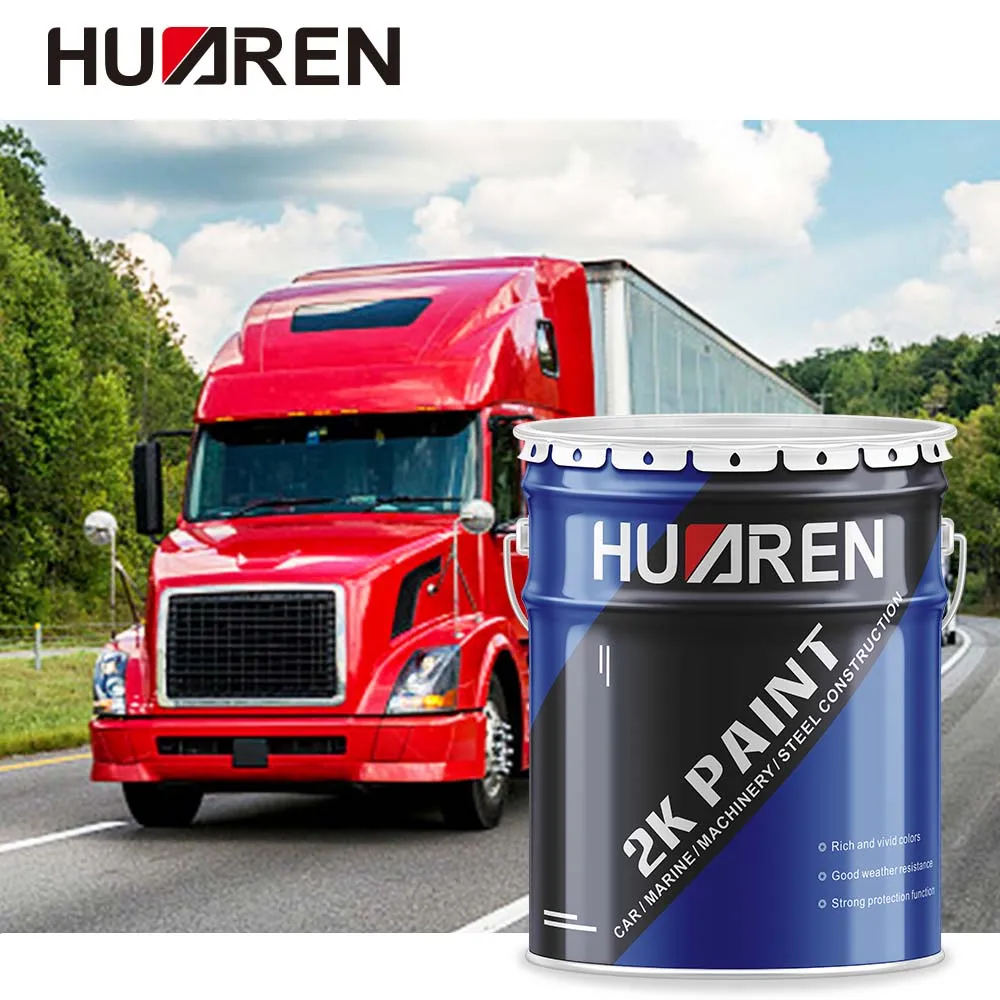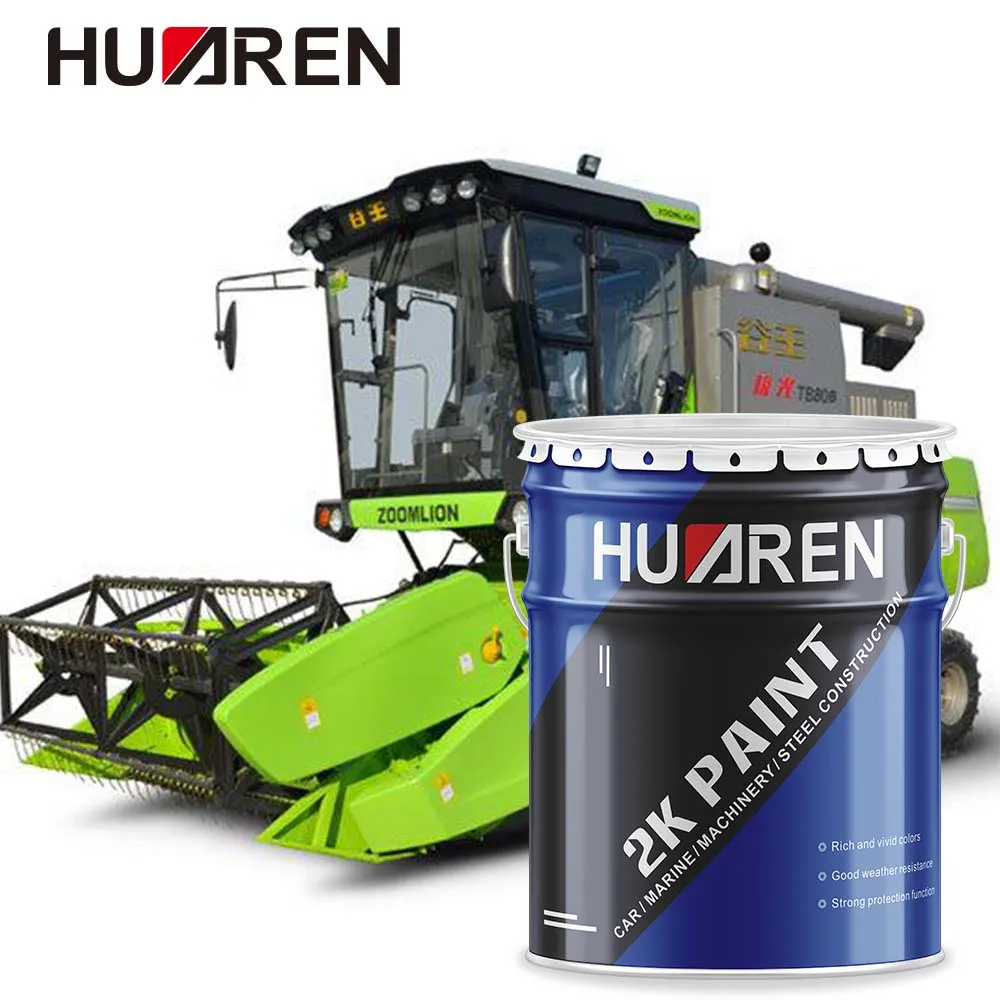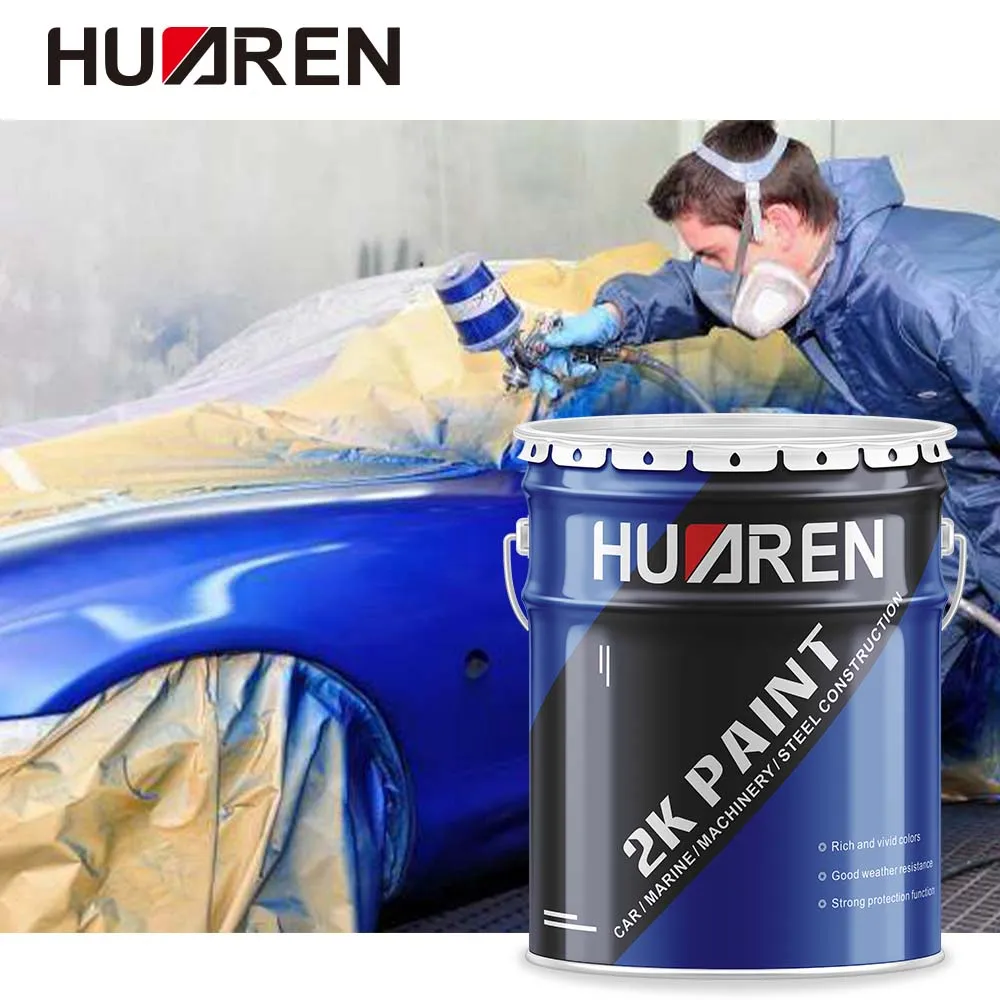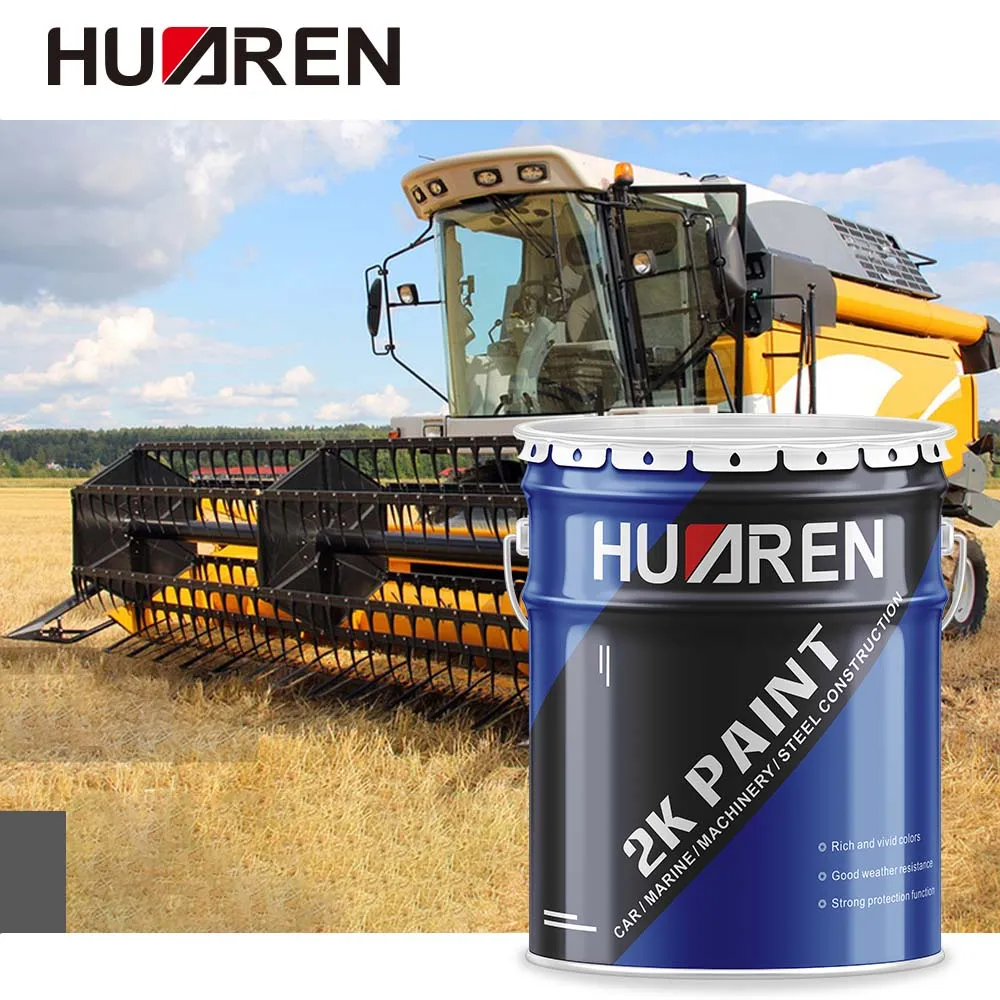Car paint plays a vital role in the beauty, protection and durability of cars. When choosing car paint, in addition to aesthetic factors such as color and gloss, the performance, environmental protection, ease of use and long-term durability of the material have also become the focus of consideration. Among the many car paint materials, polyurethane paint has been widely used for its excellent wear resistance, corrosion resistance, UV resistance and other characteristics. However, polyurethane car paint is not a single type, and is mainly divided into oil-based polyurethane paint and water-based polyurethane paint. Both have their advantages and disadvantages, so which one is more suitable for car paint?
This article will explore the difference between oil-based and water-based polyurethane paint and its application in car painting, helping car owners and painting industry practitioners to make better choices.

What is the difference between oil-based polyurethane paint and water-based polyurethane paint?
Before discussing which polyurethane paint is more suitable for car painting, we must first clarify the basic difference between oil-based and water-based polyurethane paint.
Different media
● Oil-based polyurethane paint: Oil-based polyurethane paint uses organic solvents (such as benzene, alcohols, etc.) as the medium. During the construction process, the paint is cured by the volatilization of the solvent to form a hard coating.
● Water-based polyurethane paint: Water-based polyurethane paint uses water as a dispersion medium. During the construction process, the paint relies on the evaporation of water to cure, forming a coating with elasticity and gloss.
Different environmental performance
● Oil-based polyurethane paint: Because oil-based polyurethane paint contains organic solvents, a certain amount of volatile organic compounds (VOC) will be volatilized during the construction and curing process. These substances are harmful to the environment and health.
● Water-based polyurethane paint: Water-based polyurethane paint uses water as the main medium, and the main component of volatilization is water vapor, so it has better environmental performance and meets the modern environmental protection requirements for low VOC emissions.
Different film-forming process
● Oil-based polyurethane paint: The film-forming process of oil-based polyurethane paint depends on the volatilization of organic solvents and the chemical reaction inside the coating. The coating is harder and is usually more wear-resistant and impact-resistant.
● Water-based polyurethane paint: Water-based polyurethane paint forms a film through the evaporation of water and chemical reactions. The coating has good elasticity but relatively low hardness.
Different drying time and construction difficulty
● Oil-based polyurethane paint: Oil-based paint usually takes a long time to dry, and during the construction process, the construction environment needs to have high ventilation requirements to ensure that the solvent evaporates cleanly and reduce residue.
● Water-based polyurethane paint: Water-based paint dries faster, especially in a high temperature and low humidity environment, the water evaporates quickly, so it has higher construction efficiency under some special construction conditions.

How does oil-based polyurethane paint perform in automotive painting?
Oil-based polyurethane paint has a long history of application in the field of automotive paint, and its excellent durability and chemical resistance make it the main choice for traditional automotive painting. Next, we will deeply analyze the performance of oil-based polyurethane paint in automotive painting and its advantages and disadvantages.
Advantages of oil-based polyurethane paint
● Strong weather resistance: Oil-based polyurethane paint has excellent UV resistance, and can maintain the color brightness and gloss when exposed to sunlight for a long time, avoiding fading and aging.
● Good chemical resistance: During daily use of the car, it may be exposed to various oil stains, acid and alkali substances, etc. Oil-based polyurethane paint can effectively resist the erosion of these chemicals and ensure that the coating is not corroded for a long time.
● Strong adhesion: Oil-based polyurethane paint has extremely strong adhesion to common automotive materials such as metal and plastic, and can be firmly attached to the surface of the car body and is not easy to fall off.
● Hard coating: Since the film-forming process of oil-based paint depends on the chemical reaction inside the coating after the volatilization of organic solvents, its coating has high hardness and wear resistance, which is suitable for dealing with various scratches and frictions encountered by cars during driving.
Disadvantages of oil-based polyurethane paint
● Poor environmental protection: Oil-based polyurethane paint contains a large amount of organic solvents, and a large amount of VOC will be released during the construction process, which has certain harm to construction personnel and the environment. With the increasingly stringent environmental protection regulations, the use of oil-based paint is subject to certain restrictions.
● Complex construction: Oil-based paint requires good ventilation conditions during the construction process, otherwise the volatilization of solvents may affect the quality of film formation. In addition, oil-based paint also requires the use of organic solvents to clean the construction tools, which increases the complexity of construction.
● Long drying time: Compared with water-based paint, oil-based paint has a longer drying time, especially in low temperature and high humidity environments, the drying time may be significantly extended, affecting the construction progress.

How does waterborne polyurethane paint perform in automotive painting?
As an emerging environmentally friendly paint, waterborne polyurethane paint has gradually received widespread attention and application in the field of automotive painting in recent years. Compared with oil-based paint, waterborne paint has significant advantages in environmental performance, but there is a certain gap in some performance. Let's analyze the performance of waterborne polyurethane paint in automotive painting in detail.
Advantages of waterborne polyurethane paint
● Excellent environmental performance: The main solvent of waterborne polyurethane paint is water, and almost no harmful gases are released during the construction process, which greatly reduces the emission of VOCs and complies with the increasingly stringent environmental regulations of the modern automobile manufacturing industry.
● High construction safety: Since waterborne paint does not contain organic solvents, it is non-flammable and does not produce harmful volatile gases, and the safety of construction workers is greatly guaranteed.
● Easy to clean and maintain: After the waterborne paint is applied, the tools can be cleaned directly with water, without the use of organic solvents, reducing the emission of chemical waste and making the cleaning process easier.
Disadvantages of water-based polyurethane paint
● Slightly poor weather resistance: Compared with oil-based paint, water-based paint is slightly weaker in terms of UV resistance and weather resistance. Long-term exposure to strong sunlight may cause fading and gloss loss.
● Relatively weak adhesion: Although water-based paint has good adhesion on some substrates, compared with oil-based paint, its adhesion on common automotive materials such as metal and plastic is slightly insufficient, and additional treatment is required to improve the adhesion effect.
● Low hardness: The film hardness of water-based paint is slightly lower than that of oil-based paint, and the scratch resistance is slightly weaker. Especially under the impact of external forces such as high-speed wind and sand and gravel that cars often encounter, the wear resistance of water-based paint is relatively poor.
Which is more suitable for automotive paint, oil-based or water-based polyurethane?
Through the analysis of oil-based and water-based polyurethane paints, it can be seen that both have advantages and disadvantages. In practical applications, the choice of which paint mainly depends on the use environment of the car, the personal needs of the owner, and the requirements of environmental protection regulations. The following is a comparison of the two in several key performances:
Environmental performance
● Water-based paint: It undoubtedly has an absolute advantage in environmental performance. Since it mainly uses water as a medium and does not release harmful gases during the volatilization process, it is more friendly to both construction workers and the environment.
● Oil-based paint: Although oil-based paint has excellent physical properties, it performs poorly in terms of environmental protection. It contains a large amount of organic solvents, has high VOC emissions, and is more sensitive to environmental regulations when used.
Weather resistance and durability
● Oil-based paint: Oil-based paint performs better in terms of UV resistance, chemical resistance, and long-term weather resistance. It is suitable for cars that need to be exposed to severe weather conditions for a long time, especially vehicles parked outdoors.
● Water-based paint: Water-based paint has slightly weaker weather resistance, especially when exposed to sunlight for a long time, it is prone to fading and loss of gloss.
Construction convenience
● Water-based paint: Because water-based paint dries quickly and it is easier to clean tools after construction, water-based paint is more convenient under certain emergency construction conditions.
● Oil-based paint: The construction conditions of oil-based paint are relatively high, especially in low temperature and high humidity environments, the drying time will be significantly extended, affecting construction efficiency.

Huaren Chemical Industry Co., Ltd. is a China-based manufacturer that provides cost-effective and high-performance industrial coatings. With a focus on quality and innovation, we produce over 20,000 tons annually, offering a comprehensive product line that includes acrylic paints, alkyd coatings, nitrocellulose paints, and more. Designed for applications in shipbuilding, petrochemicals, and construction, our coatings are known for their durability and reliability. Buyers can benefit from competitive pricing, discounted rates for bulk orders, and flexible customization options. Partner with Huaren Chemical and experience unparalleled value for your procurement needs. Contact us today for detailed pricing and promotions!

